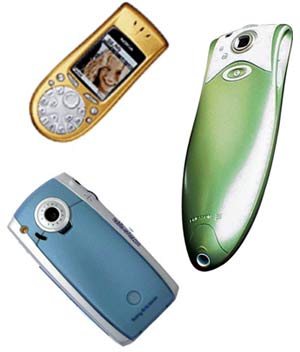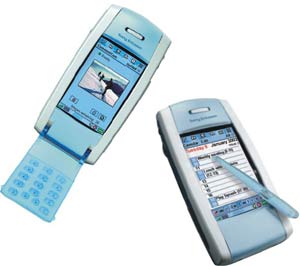

A cellular phone with an integrated camera has not appeared
on our market yet. This new device is just beginning to gain popularity
in the United States but it has already become very popular in the countries
of South-East Asia producing such camera-equipped phones. The concept of
a smartphone with an integrated photo-module is indeed extremely fascinating.
It is a multi-functional communication device, an electronic organizer
(performing the function of a pocket computer) and a digital camera at
the same time. These functions are integrated in the compact body of a
phone which can fit into the pocket, carried in a special casing fixed
to a belt, in a briefcase or a lady's handbag…
Communicators are in great demand in the West because
they are universal devices useful in various situations of our life (just
try to get a Treo and you will find that it is not readily available everywhere.
A cell-phone has an even more universal application - it is quite simple
in use and is as compact as a pocket computer. And, generally, it is much
handier to operate.
A modern smartphone is a telephone with a color graphical
screen and an in-built digital camera that can display photos in a reduced
size (preview) and in a full format (viewing the details of a photograph
is possible by moving fragments on the screen). The functioning of a smartphone
in real life could be exemplified as follows: suppose you go into a store
and see something you want to buy, but the price is too expensive for you
to make a decision alone. You need confirmation of your “precious second
half”. You pick up the telephone, take a shot of the thing you have liked,
send it to your spouse and receive the answer immediately: “Go ahead! Buy
it, darling…”
SonyEricsson P800
smartphone

The “eye” of the camera is built in the back side of the
telephone. Since it has a secondary function, it does not have an individual
button and the camera is operated by means of a standard keyboard. As a
result the telephone buttons are functionally overloaded. It is necessary
to study their functions and have them memorized. Otherwise you won't be
able to operate the camera-equipped phone.
The light-sensitive sensor is fairly small in size and
is of the CMOS type. Similar cameras are not practicable for getting a
paper print, but they could be used for viewing pictures on a computer
screen, e-mail messages and phone books (for instance, they can be stored
as the Incoming Call Picture).
Simplified optics, a low level of light-sensitivity, expositional
automatics and the absence of a flashlight are not serious disadvantages.
The pictures are small in size and therefore easy to transmit via a wireless
messaging technology (all new multimedia smart phones are provided with
the GPRS and short multimedia message service MMS protocols).
And lastly, a camera - quipped smartphone is not generally
envisaged for getting high quality pictures, but it is an excellent tool
for using images stored in the mobile photo album for a variety of useful
and fun applications.